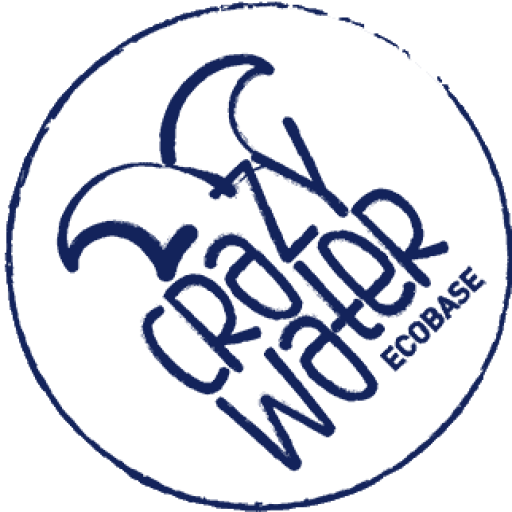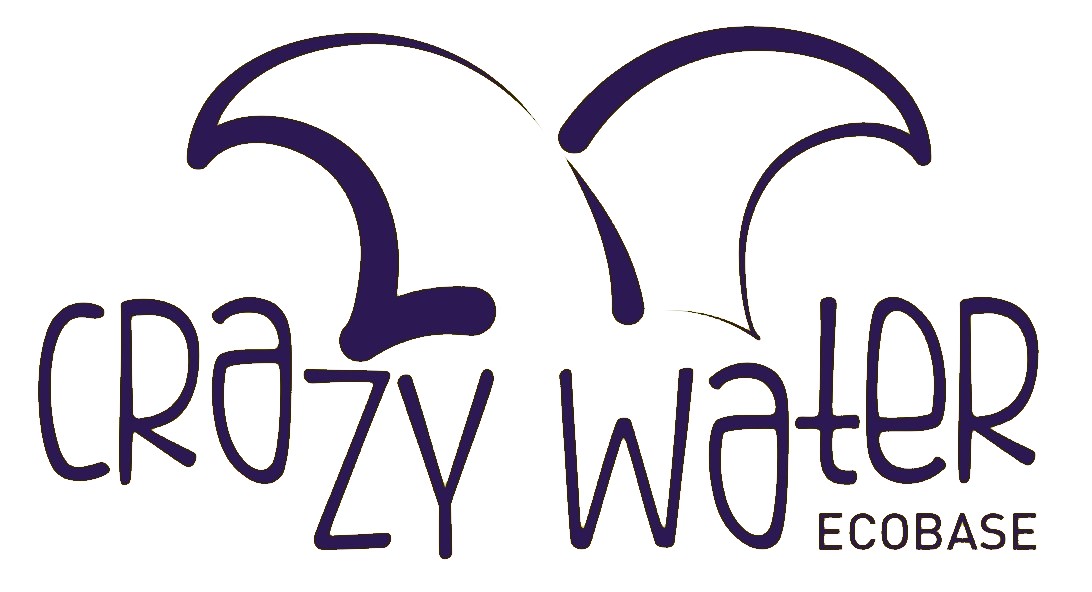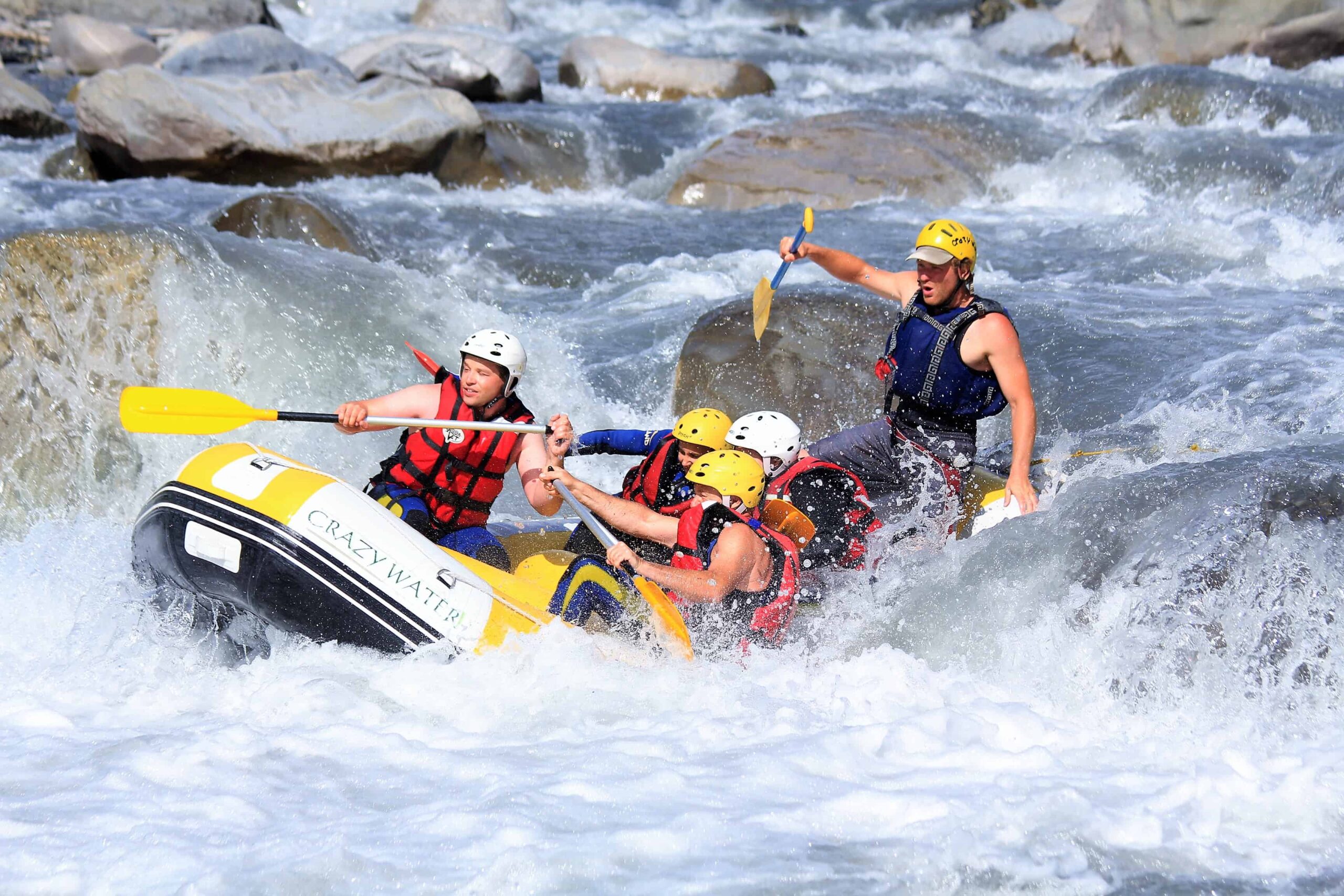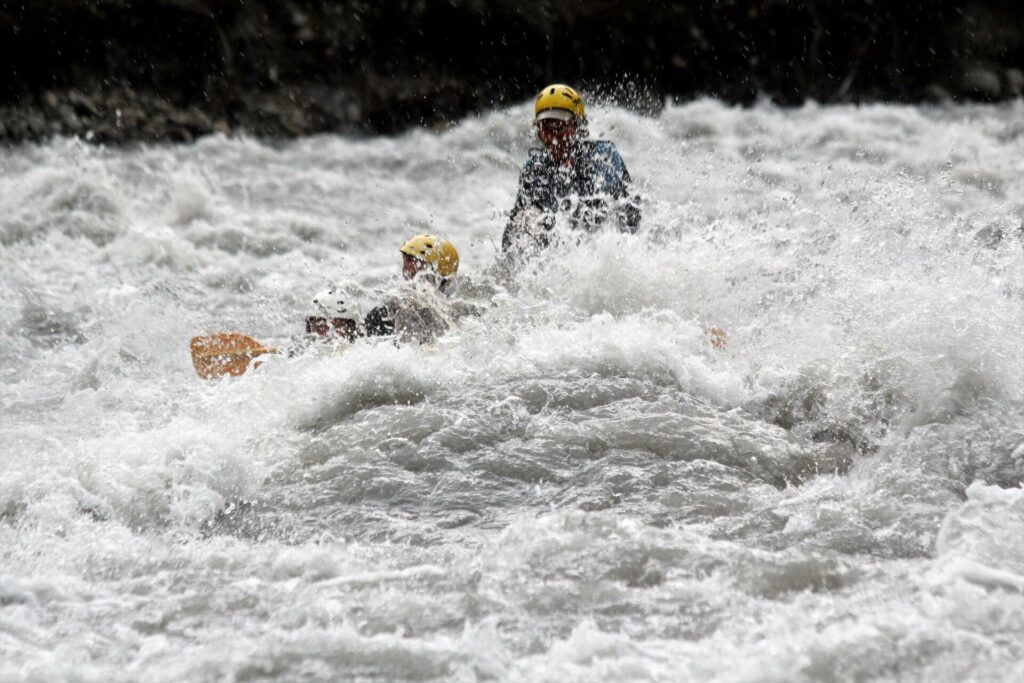
How to choose the right Ubaye route, depending on the water levels?
Depending on the season and the weather, the Ubaye changes in intensity and the white water packages that we offer: discovery descent, sport, etc. also change. We adapt the level of difficulty with the different river routes.
We will explain to you the evolution of the difficulty levels of the courses, depending on the season. We are talking about portions of the river here. This page is indicative: it is the guides who choose the right route, adapted to your desires, and to the conditions of the river on the day.
If you want to understand the choice of routes based on water levels, here are the indications that we provide:
- A detailed description of all the routes and their landscapes
- An explanation of the variations of the river, depending on the seasons
- Route selection tables based on water levels
NB: It is important to understand that this information is unofficial, and that it is the result of the experiences of our Crazy Water rafting guides. We are talking about a natural river and therefore a living element. There is no exact science when it comes to living water.
If you would like more information, do not hesitate to contact us by telephone at 06.87.53.87.98. You can reach us 7 days a week from 8 a.m. to 9 p.m.
Variations in the flow of the Ubaye River
There are three elements to know to understand water levels:
- The snowmelt period: The source of the Ubaye is at 2900 meters above sea level. It is a stock of snow which melts gradually, starting in spring. The more snow we have at altitude, the higher the water levels will be in spring and summer.
- Temperatures: When temperatures are high, snow melting accelerates and water levels rise. If temperatures drop, the flow also drops because the snow melts less quickly at altitude.
- Rain: during precipitation the flow increases, but the river returns to its seasonal level quickly. This is the “flush” effect. This lasts on average one day.
The choice of routes depending on the flow of the river
We calculate the water flow in cubic meters per second via the service vigicrue weather France
Here is a reference table of the choice of routes, for the Crazy Water rafting base
Water levels for the rafting activity
| Water flow measurement | Baby raft | Discovery Rafting Best of | Rafting Sports | Extreme Rafting |
|---|---|---|---|---|
| From 5 to 30 m3 second | Thuile-Fresquiere | Martinet-Lauzet | Ex from the Top | Ex from the bottom |
| From 30 to 50m3 second | Condamine-Jausiers | Thuiles-Fresquiere Martinet-Lauzet | Martinet-Lauzet | |
| From 50 to 70m3 second | Thuiles-Fresquiere | Martinet-Lauzet | ||
| More than 70m3 second | Thuiles-Fresquiere Condamine-Jausiers | Thuiles-Fresquiere | Bachelard |
Water levels for the Hydrospeed activity
Below 6m3 second, hydrospeed is not possible on Ubaye. There is no longer enough water compared to the speed of the current and the user touches the bottom of the river too much.
| Water flow measurement | Hydrospeed Family Initiation | Hydrospeed Discovery | Hydrospeed Sport |
|---|---|---|---|
| From 6 to 20 m3 second | Martinet-Lauzet | Martinet-Lauzet | Ex from the Top |
| From 20 to 50m3 second | Condamine-Jausiers Thuiles-Fresquiere | Thuiles-Fresquiere | Martinet-Lauzet |
Water levels for the Kayak activity airboat and Hotdog (inflatable kayaks)
Above 20m3 second, the inflatable kayak is no longer passable on the Ubaye river. The boat is not suitable for big waves because the kayak is self-bailing up to a certain level.
| Water flow measurement | Kayaking Family Initiation | Discovery Kayak | Kayak Sports |
|---|---|---|---|
| From 4 to 10 m3 second | Martinet-Lauzet | Martinet-Lauzet | Ex from the Top |
| From 10 to 20m3 second | Condamine-Jausiers Thuiles-Fresquiere | Thuiles-Fresquiere | Martinet-Lauzet |
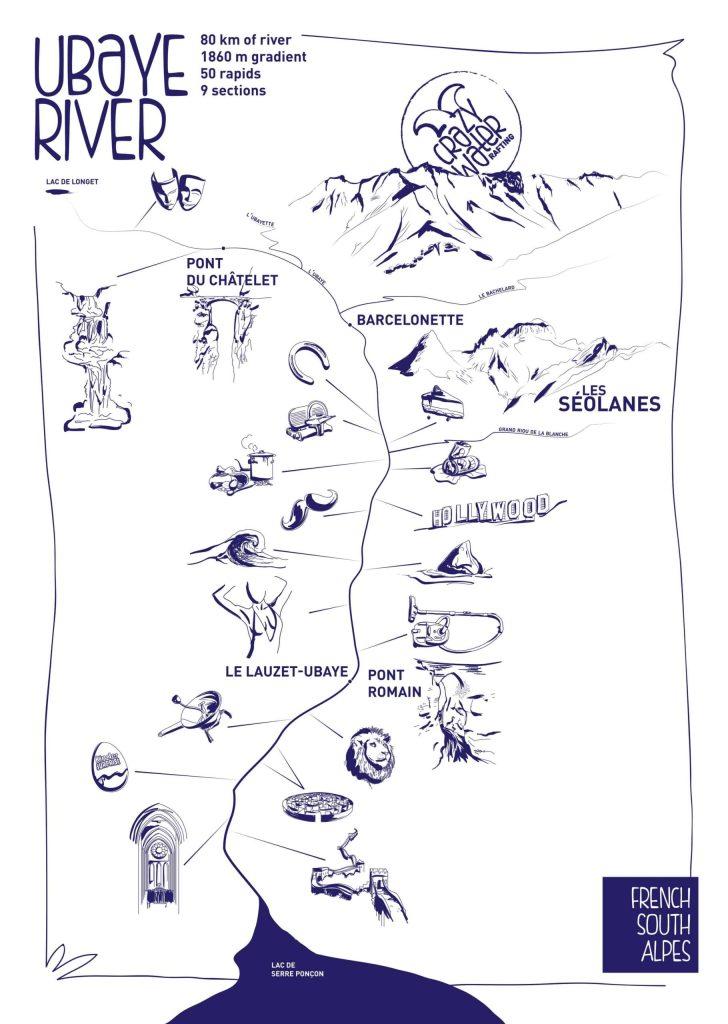
The Ubaye river ROUTES
We will start from the source of the Ubaye, to the Lake of Serre Ponçon, where the Ubaye ends.
Upper Ubaye
The gorges of Saint Paul sur Ubaye (class V): This is a very narrow part of the river, with waterfalls. It is only passable in spring, by experienced kayakers, in river kayaks (plastic kayaks with skirts). This route is not commercial.
Bachelard (class IV-V)
Sail on a tributary of the Ubaye. A little navigation treasure, this route evolves in a wild environment. You have to rope down the raft to access the river. A technical descent, it is only done in spring, when the Bachelard is in flood.
Condamine – Jausiers (class II-III)
Very wild, the river crosses the Larch forest, surrounded by steep mountains. You will see the Fort de Tournoux, a spectacular historical monument, carved into the rock. There are two thrilling rapids to cross and the rest of the course is wide and peaceful.
From Jausiers to Thuiles
This is the canal that crosses Barcelonnette. There are no white water activities.
Tiles – Fresquière (class III)
We are starting to get to the heart of the matter! The start is in the Thuiles rapid; a real nice fast handler and rather long. Then the rest of the course is playful, with the Rioclar rapids and its beautiful waves.
Lower Ex or Lower Infrant Ex (class V)
Between the hamlets of La Fresquière and Le Martinet, it is a series of rapids, very technical with small falls. This route is demanding and requires real knowledge of river navigation. In spring, this route is impassable except for extreme kayakers (in plastic kayaks with skirts). In summer, when the water levels are good, it is an extraordinary playground for sportsmen.
Martinet-Lauzet or Meuleu (class IV)
The “mythical” Ubaye route. It is the longest route in terms of kilometers and the most varied in terms of landscapes. You start in the Barcelonnette valley, wide and green. Then a more mineral atmosphere, with the river bed tightening. And to finish in the very narrow gorges of Lauzet. You pass under the Roman Bridge, a historic monument in the Valley. There are 15 rapids following each other throughout the descent.
Lower Ex or Lower Infringent Ex (class V+)
From the place called the source in Lauzet, to the Serre Ponçon lake. It is an extreme course which is rarely accessible commercially. It is splendid with sequences of large rapids in the middle of narrow gorges. It is impassable during heavy floods. This is the favorite route of the Ubaye crazy water rafting team
Can a flood be dangerous when rafting?
Yes and no
For the commercial practice of rafting, that is, when we take the professional responsibility of taking people on the river, the answer is no! All risk factors are analyzed and controlled by the river guide who accompanies you.
You should know that the Ubaye guides have received special training for this type of class III to V river. This is a high river guide diploma. And it is by gaining experience that the guide chooses to go on sports or extreme courses.
As a practitioner of a whitewater activity, zero risk does not exist, like all outdoor activities. As zero risk does not exist in skiing or sea surfing etc…
Yes, a flood can be dangerous, because of the waste that the river can carry: trees, iron installation carcasses too close to the river bed, etc. they can get stuck in a rapid, on an essential passage of the raft or 'another boat. In personal practice, the extreme kayaker must be very vigilant. In a commercial context, the guides and the various Ubaye rafting bases are well informed and know the places to avoid on the big day.
Is rafting dangerous when it rains?
No ! During rain, even heavy rain, the water level hardly rises. The descent remains the same and wet for wet, rafting is very good when it rains. There is no risk of lightning because this weather phenomenon remains at the top of the mountains, and not in the valley. In addition, you are on a plastic boat on the water, so no danger.
The same goes for hydrospeed and inflatable kayaking which are practiced very well in the rain.
On the other hand, canyoning is an activity that cannot be practiced when it rains. You move through pools of water and waterfalls, so the water level can quickly rise. There is also the risk of slipping too much on the rocks. So if it rains and canyoning is canceled, come rafting!
If you would like to know more about the Ubaye river, we will be happy to answer all your questions at our Crazy Water rafting base!
